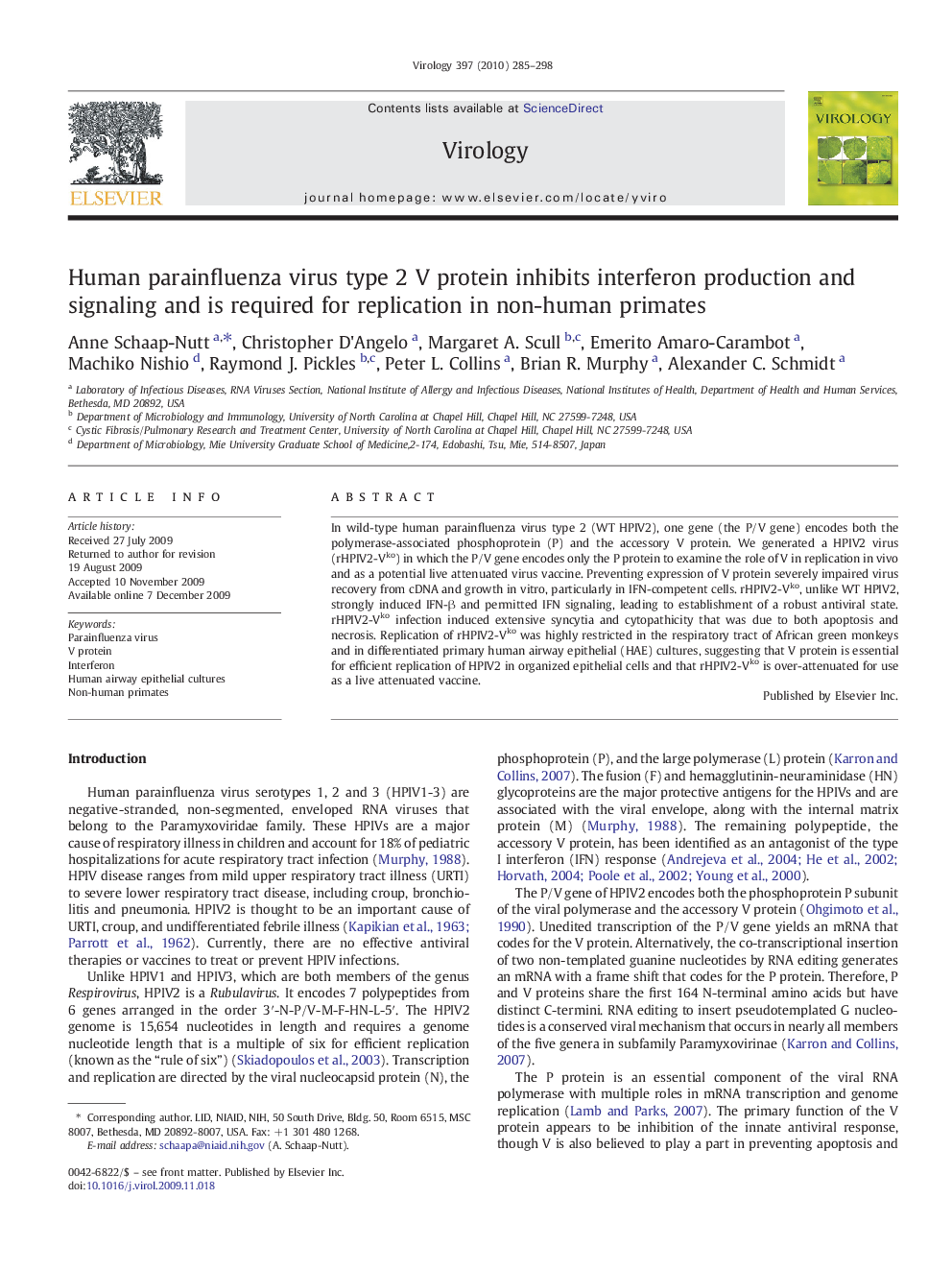| Article ID | Journal | Published Year | Pages | File Type |
|---|---|---|---|---|
| 3425056 | Virology | 2010 | 14 Pages |
In wild-type human parainfluenza virus type 2 (WT HPIV2), one gene (the P/V gene) encodes both the polymerase-associated phosphoprotein (P) and the accessory V protein. We generated a HPIV2 virus (rHPIV2-Vko) in which the P/V gene encodes only the P protein to examine the role of V in replication in vivo and as a potential live attenuated virus vaccine. Preventing expression of V protein severely impaired virus recovery from cDNA and growth in vitro, particularly in IFN-competent cells. rHPIV2-Vko, unlike WT HPIV2, strongly induced IFN-β and permitted IFN signaling, leading to establishment of a robust antiviral state. rHPIV2-Vko infection induced extensive syncytia and cytopathicity that was due to both apoptosis and necrosis. Replication of rHPIV2-Vko was highly restricted in the respiratory tract of African green monkeys and in differentiated primary human airway epithelial (HAE) cultures, suggesting that V protein is essential for efficient replication of HPIV2 in organized epithelial cells and that rHPIV2-Vko is over-attenuated for use as a live attenuated vaccine.
